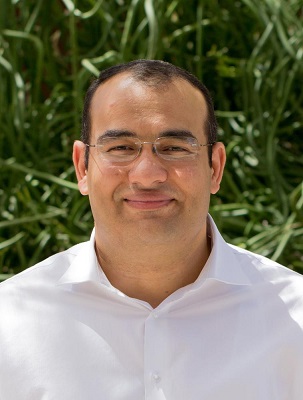Seeing Electrons In Action
Hosted By: Short Wavelength Sources and Attosecond/High Field Physics Technical Group
14 June 2021 14:00 - 15:00
Eastern Time (US & Canada) (UTC -05:00)Electron motion is at the heart of phenomena in nature. We can see, smell, feel and move because the electrons are hopping in our body. Seeing the electrons in action will reveal one of the life secrets. My research work aims to record images and movies for the electron motion in action. It is joyful and fascinating to see what no one has ever seen before.
In the last decade, the development of the Ultrafast Electron Microscopy (UEM) and Diffraction (UED) tools enabled recording images for the atomic and molecular motion in real-time. Yet, the electron motion imaging remained beyond reach due to the technical challenges in generating short electron pulses, which limited the temporal resolution in the electron microscopy and diffraction measurements. The generation of single isolated attosecond electron pulses is the key to attaining the attosecond imaging resolution essential for recording images and movies of the electron motion in real-time.
In this webinar, I will explain how we generated the first-ever shortest attosecond electron pulses using half-cycle laser pulses. Then, I will explain the development of the attosecond electron diffraction and the attosecond electron microscopy, what I so-called "Attomicroscopy," imaging tools. Finally, I will present the current and potential experiments to record the electron motion images and movies in matter. Attomicroscopy is opening a new era in Ultrafast Science by providing real-time access to all microscopic motions outside the atomic core to change humankind's insights into the microcosm workings radically. Attomicroscopy is opening a time gate to see the quantum world promising to break new grounds with prospects for basic science, information technology, and biological applications.
What You Will Learn:
- How to generate the single-isolated electron pulses
- Development of electron imaging tools (diffraction and microscopy)
- How to record images and movies of the electrons in action
Who Should Attend:
- Attosecond physics researchers
- Ultrafast electron microscopy and diffraction researchers.
- Ultrafast kineticists
- Electron dynamics spectroscopists
- Femtochemists
About the Presenter: Mohammed Hassan, University of Arizona
 Mohammed Hassan is an Assistant Professor of Physics and Optical Sciences at The University of Arizona. He has 10 years of experience in the Attosecond Physics and Ultrafast Electron Microscopy and imaging research fields. He earned his Ph.D. from Max-Planck Institute for Quantum Optics, Munich, Germany. Then, he joined Caltech as a postdoctoral scholar through 2017. Earlier in his career, Dr. Hassan developed the light field synthesizer to generate the first optical attosecond pulse, the shortest light pulse documented in the Guinness World Records. Exploiting this tool, he was able to measure the time an electron takes to response to external light field. Recently, he demonstrated the shortest electron pulse, to date, in Ultrafast Electron Microscopy. Currently, he is known for developing attosecond electron microscopy and attosecond electron diffraction to image the electron dynamics of matter in real time and space. He received the W. M. Keck research grant as a single PI, a Gordon and Betty Moore Foundation research investigator award grant, and an Air Force Young Investigator award.
Mohammed Hassan is an Assistant Professor of Physics and Optical Sciences at The University of Arizona. He has 10 years of experience in the Attosecond Physics and Ultrafast Electron Microscopy and imaging research fields. He earned his Ph.D. from Max-Planck Institute for Quantum Optics, Munich, Germany. Then, he joined Caltech as a postdoctoral scholar through 2017. Earlier in his career, Dr. Hassan developed the light field synthesizer to generate the first optical attosecond pulse, the shortest light pulse documented in the Guinness World Records. Exploiting this tool, he was able to measure the time an electron takes to response to external light field. Recently, he demonstrated the shortest electron pulse, to date, in Ultrafast Electron Microscopy. Currently, he is known for developing attosecond electron microscopy and attosecond electron diffraction to image the electron dynamics of matter in real time and space. He received the W. M. Keck research grant as a single PI, a Gordon and Betty Moore Foundation research investigator award grant, and an Air Force Young Investigator award.
